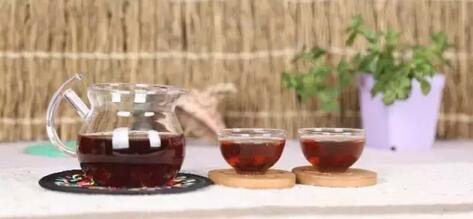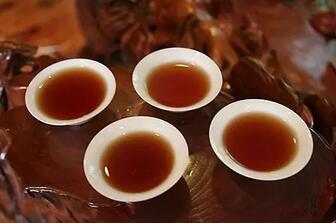Pu-erh tea, a very familiar name, is a rich and aromatic tea that is an indispensable part of daily life for the people of Yunnan. From being a local specialty, Pu-erh tea has now become a highly sought-after beverage nationwide, not only because of its unique health benefits but also due to its captivating taste that leaves people craving for more. But do you know why Pu-erh tea cakes weigh 357 grams?
Yunnan Pu-erh tea is one of the province's signature products, adored by many. Beyond its flavor and effects, another notable feature is that almost every Pu-erh tea cake weighs 357 grams. Why is this the case?

Many people are unaware of the origin of the 357-gram weight for Yunnan Pu-erh tea cakes. If you're curious or only partially informed, here's an explanation. The 357-gram standard applies specifically to tea cakes; loose Pu-erh tea, tuo cha (bowl-shaped tea), and smaller tea cakes do not follow this weight.
Historically, Pu-erh tea flourished over two thousand years ago and reached its peak during the Qing Dynasty among the imperial family. Tea cakes, also known as "seven-son tea cakes," traditionally weighed 357 grams each. The reason behind this weight dates back to ancient times:

In ancient border trade, the government imposed standardized measurements to minimize disputes and facilitate taxation and transactions. For example, ancient round tea (seven-son tea cakes) weighed 7 taels each, with seven cakes making one tong (49 taels, equivalent to 3.06 jin at the time, where 16 taels equaled 1 jin). Thirty-two tong made one yin (98 jin), close to 100 jin.
After the founding of the People's Republic of China, the weight of seven-son tea cakes was set at 357 grams. This made the total weight per tong and per basket more rounded: one tong (7 cakes × 357 grams) ≈ 2.5 kg; one basket (12 tong × 2.499 kg) ≈ 30 kg. This standardization simplified production and sales management for tea manufacturers.

Thus, the 357-gram weight for Pu-erh tea cakes was established.
Other interpretations also exist:
Some view the number 357 through Chinese cultural traditions, where 3 + 5 + 7 equals 15, symbolizing reunion and togetherness.
Others interpret it through the lens of the I Ching (Book of Changes). The numbers 3, 5, and 7 are all yang numbers (odd numbers: 1, 3, 5, 7, 9), representing the sun, fire, and dynamism, while yin numbers (even numbers: 2, 4, 6, 8, 10) symbolize the moon, water, and stillness.
The sum of yang numbers is 25 (1 + 3 + 5 + 7 + 9), reflecting the movement of the sun, while the sum of yin numbers is 30 (2 + 4 + 6 + 8 + 10), corresponding to the 30 days of a lunar month—a hidden astronomical alignment in the I Ching. How profound Chinese traditional culture is!
The mystery of 357 lies in its symbolism: 3 represents the three realms (heaven, earth, and humanity), 5 symbolizes the five elements, and 7 stands for "shaoyang" (lesser yang), associated with thunder and the dragon. The essence of 357 in Pu-erh tea embodies the spirit of the dragon, aligning with the laws of yin-yang and the five elements to achieve harmony between heaven, earth, and humanity. This spirit reflects the broader cultural ethos, distilled into the philosophy of tea.
Seven, as shaoyang, represents the dragon—ever-changing and dynamic, much like the diverse transformations of Pu-erh tea over time.
Five represents the five elements, the laws of change, and the five flavors, with the highest state of Pu-erh tea being a harmonious blend of tastes.
Three symbolizes the unity of heaven, earth, and humanity—the triad from which all things arise. Appreciating and collecting tea requires harmony in all three aspects. Truly, 357 is a magical number.